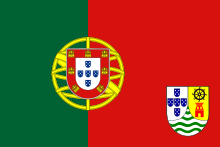Language/Indo-portuguese/Grammar/Gender
Hi Indo-Portuguese learners! 😊
In this lesson, we will talk about a very important aspect of Indo-Portuguese Grammar - Gender. Like many Romance languages, Indo-Portuguese nouns have grammatical gender: masculine or feminine. The gender of a noun can affect the form of other words in the sentence, such as articles and adjectives. Therefore, it is important to understand the gender of Indo-Portuguese nouns in order to use the language correctly.
After mastering this lesson, these related pages might interest you: Negation & Plurals.
Understanding Indo-Portuguese Noun Gender[edit | edit source]
In Indo-Portuguese, as in other Romance languages like Spanish, French, and Italian, every noun is assigned a gender, either masculine or feminine. There are no rules that determine whether a noun is masculine or feminine, so you just have to memorize the gender as part of the noun vocabulary.
In general, nouns ending in -o are masculine, while nouns ending in -a are feminine. However, there are exceptions to this rule such as "dia" (day) and "mão" (hand), which are feminine and masculine respectively. Here are some examples of Indo-Portuguese nouns with their gender:
| Indo-Portuguese | Pronunciation | English |
|---|---|---|
| casa | /ˈkaza/ | house (feminine) |
| cavalo | /kɐˈvaɫu/ | horse (masculine) |
| livro | /ˈlivɾu/ | book (masculine) |
| mesa | /ˈmezɐ/ | table (feminine) |
It is also worth noting that some nouns can be either masculine or feminine depending on the context, such as "pessoa" (person) or "artista" (artist). In these cases, the article and adjective accompanying the noun should match the gender.
Articles[edit | edit source]
In Indo-Portuguese, the gender of the noun determines the form of the definite and indefinite article.
Definite Article[edit | edit source]
The definite article in Indo-Portuguese has four forms:
O for masculine singular, A for feminine singular, OS for masculine plural, and AS for feminine plural.
Here are some examples:
| Indo-Portuguese | Pronunciation | English |
|---|---|---|
| O homem | /u ˈɔmɛ̃/ | The man (masculine singular) |
| A mulher | /ɐ ˈmuʎeɾ/ | The woman (feminine singular) |
| OS carros | /uʃ ˈkaʁuʃ/ | The cars (masculine plural) |
| AS cidades | /ɐʃ siˈdadɪʃ/ | The cities (feminine plural) |
Indefinite Article[edit | edit source]
The indefinite article in Indo-Portuguese has two forms:
UM for masculine singular and UMA for feminine singular.
Here are some examples:
| Indo-Portuguese | Pronunciation | English |
|---|---|---|
| UM livro | /ũ ˈlivɾu/ | A book (masculine singular) |
| UMA mesa | /ˈumɐ ˈmezɐ/ | A table (feminine singular) |
Adjectives[edit | edit source]
Adjectives in Indo-Portuguese must agree in gender and number with the noun they describe. Here are some examples:
- Bom (good) - bom is used with masculine singular nouns; boa is used with feminine singular nouns
- Grande (big) - grande is used with masculine singular nouns; grande is also used with feminine singular nouns
Here is an example dialogue so you can see how articles and adjectives work in context:
- Person 1: Eu comprei um (a) carro vermelho (red masculine singular adjective) e um (a) telefone (telephone masculine singular noun).
- Person 2: Interessante! Eu tenho uma (a) casa amarela (yellow feminine singular adjective) e uma (a) geladeira (fridge feminine singular noun).
Note that for masculine nouns, the adjective takes the same form as the indefinite article, but for feminine nouns, the form of the adjective is different from both the definite and indefinite article.
Cultural Insights[edit | edit source]
Portuguese is the official language of Portugal, Brazil, Mozambique, Angola, Guinea-Bissau, and Cape Verde. As a result of the Portuguese colonization of India, the Portuguese language has also greatly influenced South Asia, particularly in cities such as Goa and Daman and Diu.
Indo-Portuguese Creole, also known as "Portuguese-Indian Creole" or "Luso-Indian Creole," is a creole language derived from Portuguese that is spoken in some parts of India. It is a unique blend of Portuguese and the indigenous languages of India such as Konkani, Marathi, and Gujarati.
Practice[edit | edit source]
To improve your Indo-Portuguese Grammar, you can also use the Polyglot Club website. Find native speakers and ask them any questions!
➡ If you have any questions, please ask them in the comments section below.
➡ Feel free to edit this wiki page if you think it can be improved. 😎
Sources[edit | edit source]
- contacts and pidgins, from wikipedia
- language, from wikipedia
- [1], from wikipedia
Other Lessons[edit | edit source]
- Adjectives
- Questions
- How to Use Have
- Pronouns
- Future Tense
- Negation
- Plurals
- Give your Opinion
- Conditional Mood

